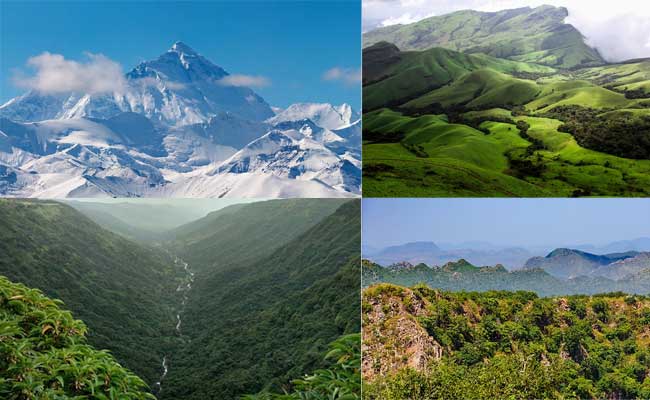India is a land of diverse landscapes, ranging from sun-soaked deserts to dense forests, and from pristine beaches to towering mountains. While the country’s mountains may not be as well-known as some of the world’s other ranges, they offer breathtaking scenery and a wealth of cultural and natural attractions. In this article, we will explore the mountains of India, their beauty, and why they are worth exploring.
The Himalayas: A Majestic Range
The Himalayas are perhaps the most famous mountain range in India, stretching over 2,400 kilometers from east to west. This majestic range is home to some of the highest peaks in the world, including Mount Everest, Kanchenjunga, and Makalu. The Himalayas are not only a natural wonder, but also an important part of Indian culture and spirituality. Hindu mythology is replete with references to the Himalayas, and it is believed that many great sages and ascetics have meditated in its caves and valleys.
The Himalayan region is also home to several hill stations, such as Shimla, Manali, and Darjeeling, that offer respite from the heat of the plains. These towns are popular tourist destinations and attract thousands of visitors each year. The Himalayas are also an important source of water for the Indian subcontinent, with several rivers, including the Ganges, originating from the range.
The Western Ghats: A Biodiverse Wonderland
The Western Ghats, a UNESCO World Heritage Site, is a range of mountains that runs parallel to the western coast of India. Spanning over 1,600 kilometers, the Western Ghats are a biodiversity hotspot and home to a staggering array of flora and fauna. The region is also culturally significant, with several ancient temples and forts located amidst its hills.
The Western Ghats are particularly known for their tea and coffee plantations, which produce some of India’s finest brews. Hill stations like Munnar and Ooty attract tourists with their scenic beauty and cool weather. The Western Ghats are also home to several national parks and wildlife sanctuaries, such as the Silent Valley National Park and the Periyar Tiger Reserve, which offer opportunities to see elephants, tigers, and other wildlife in their natural habitats.
The Eastern Ghats: A Lesser-Known Range
The Eastern Ghats are a range of mountains that run along the eastern coast of India, from Odisha to Tamil Nadu. While not as well-known as their western counterparts, the Eastern Ghats are still worth exploring for their natural beauty and cultural significance. The region is home to several ancient temples and monuments, such as the Konark Sun Temple in Odisha and the Brihadeeswarar Temple in Tamil Nadu.
The Eastern Ghats are also known for their waterfalls, such as the Duduma Waterfalls in Odisha and the Hogenakkal Falls in Tamil Nadu. The hills are also home to several indigenous communities, such as the Kondhs and the Dongrias, who have unique cultures and traditions.
The Aravalli Range: A Historical and Ecological Treasure
The Aravalli Range is a range of mountains that stretches over 800 kilometers through the states of Rajasthan, Haryana, and Gujarat. The range is not as high as some of the other mountains in India, with its highest peak, Guru Shikhar, standing at 1,722 meters. However, the Aravallis are still significant for their ecological and historical importance.
The Aravallis are home to several wildlife sanctuaries and national parks, such as the Sariska Tiger Reserve and the Kumbhalgarh Wildlife Sanctuary. The range is also important for its role in the conservation of the critically endangered Great Indian Bustard.
![]()





